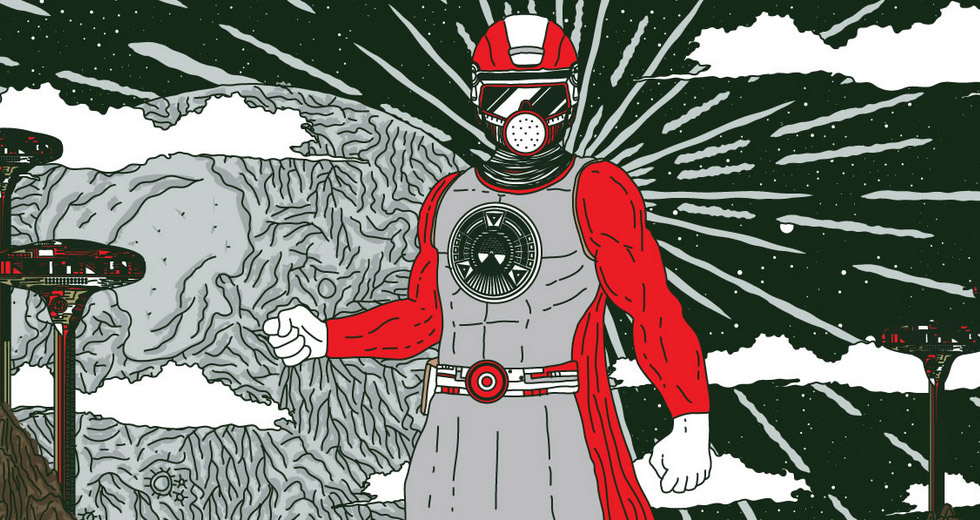A Kick in the Kawaii: Inside the World of J-Core
With “cute” being the word on so many electronic music producers’ lips of late, Vivian Host explores a Japanese subculture taking adorable to the dark side.
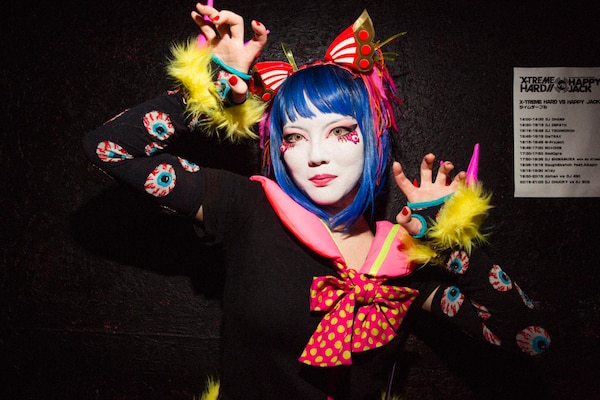
It may be the second-wave of geek chic, but suddenly all things otaku (“Japanese nerd,” essentially) are hot. Now that the Western world has more information and access to the Japanese underground than ever – anime, manga, J-core, J-pop, videogames, dōjin culture, cosplay, and the xxx-rated spin-offs thereof – Japanese music and aesthetics are influencing hotly-tipped producers like A. G. Cook, Ryan Hemsworth and DJ Paypal, and labels like PC Music and Zoom Lens. With Lady Gaga touring with vocaloid hologram Hatsune Miku, Sophie collaborating with Kyary Kyary Pamyu, and Animecon and ComicCon capturing the imagination of the mainstream, suddenly a flashlight is being shone into the crevices of the internet where die-hard nerds of all ages have spent a decade - or, more industriously, building a subculture with more arms than a tentacle demon.
This subculture is “J-Core” – as in, Japanese hardcore – but who it belongs to is anyone’s guess. The blueprint of the sound was created in Japan in the late ’90s, as producers like Technorch, M1dy, DJ Chucky, Shimamura, REDALiCE, and t+pazolite sliced ’n’ diced influences from UK and US rave, Rotterdam gabber and European hard techno together liberally with their favorite samples and melodies from Japanese anime, pop music, videogames, and vocaloid music – the more kawaii (“cute”) or disturbing the better.
Jea of DJ SHARPNEL was perhaps the first to create the template (if any) for J-core. In 1998, he issued the first release on his Sharpnelsound label, a CD-R called High Speed Music Team by Sharpnel vs. Project Gabbangelion, the name and music a reference to the popular apocalyptic anime TV show Neon Genesis Evangelion.
Like most ’90s breakcore, it’s rife with relentless kicks and breaks at speeds upwards of 200bpm and sounds like a first-person shooter gone out of control; the trenchcoat mafia with a rainbow lining, a Furby possessed by a rave demon. But the trademarks of Japanese hardcore are all there: it’s fast and lacks a predictable “dancefloor” formula, with surgically sharp cuts and turns broken up by a dramatic tableau of chipmunked chiptune melodies and cartoon, schoolgirl voices. To this day, it’s never been clear to fans who is actually a member of DJ SHARPNEL or other Jea-related aliases like Gabbangelion, Killingscum, or Cotton Pantie’s. (Then again, disorientation has been the name of this game since day one.)
Japanese hardcore was just a small part of the global gabber continuum - until the last several years. “The term J-Core was first introduced in 2006 or even earlier on an overseas forum to describe DJ SHARPNEL,” recalls DJ Technorch. “DJ SHARPNEL's layering of anime vocals on top of speedcore/Frenchcore beats was obviously different from European hardcore techno. [We] had a different sound from the Europeans, and therefore we were lumped together. Honestly, I think someone just needed a term to categorize a similar group of hardcore techno artists for downloading on illegal download sites.”
The Pokémon generation, having grown up with Power Rangers and Dragon Ball Z, obsessively searched anime online – thanks to Torrents, 4chan, internet forums, and YouTube, they turned up J-core (which samples anime and often uses its graphics). And then some of these kids made beats, uploaded them, and tagged them J-Core. These days, you’re just as likely to turn up a J-Core DJ or producer from Ohio or Frankfurt as Tokyo or Chiba. (As in the case of Vienna’s DJ Kuro, who dominates the “J-Core” search on YouTube.)
Their music may be deeper and stranger than that of a 13-year-old warping pop songs to obscene speeds in Audacity... but because of the internet, they’ve somehow all ended up in the same club.
Some argue that J-Core has become ruled by weeaboos – a derogatory term for Westerners who become obsessed with Japanese culture by way of anime, manga, and videogames. They rush to remix the newest anime songs as soon as they’re released, slap pictures of wide-eyed cartoon heroines like Asuna Yuuki and Shana on everything, and give themselves Japanese names or strings of letters and numbers. This interest may be generating more revenue for Japanese hardcore producers – nearly all of whom self-release their music on CD – but many of the founding fathers bristle at the J-Core tag. Their music may be deeper and stranger than that of a 13-year-old warping pop songs to obscene speeds in Audacity (see “nightcore”) but because of the internet, they’ve somehow all ended up in the same club.
Or should I say chat room? Traditionally, the meeting point of any electronic music genre has been some type of rave or club night, but these days the party is just as likely to be a livestream, a message board or a Reddit subthread as it is to be an actual physical location. (Online “electronic music festivals,” featuring as many as 20 DJ sets, are popular in the J-core community.) Many J-core fans never even set foot in a club. Either they’re not the type, they live overseas or they’re too young to get in (you have to be 20 to enter Japanese venues, and the ID policy is strict).
They do, however, flock to dōjinshi fairs. Dōjin is kind of the equivalent of DIY, essentially referring to self-created and bootleg stuff (as opposed to mass-produced): everything from fan fiction and comic books to clothing, dolls and music. A couple of times a year Tokyo hosts a popular dōjin fair called ComicKet (the equivalent to US ComicCon), which comprises 20 acres of limited edition and small-batch products that are bought and traded like gold, and M3, a dōjin flea market strictly for music. But all in all, it’s hard to actually see the maybe 20,000 or 30,000 fans of J-core, since many simply prefer staying online to actually leaving the house.
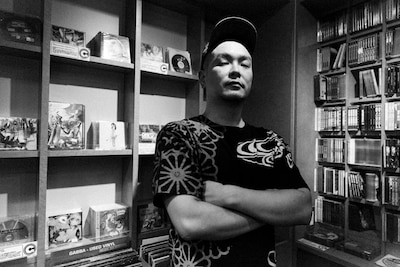
It’s important to realize how this break from DJ culture has influenced the music of Japanese hardcore producers. “Most of the [electronic] hardcore fans in Japan still buy CDs,” explains Technorch. “Artists do not need to make a ‘Japanese sword’ for practical DJ use like in Europe because we have a few tens of thousands of hardcore listeners who do not go to clubs. Many of my tracks are constructed in Radio Edit forms and have tempo changes. They are produced for home listening and the vocals are mixed louder. No one dances at home while listening to CDs as the houses in Japan are extremely small. Therefore, we tend to avoid loops. Also, when it comes to music for music videogames, as you have to squeeze in everything in 120 seconds, so people look for more powerful melodies and changing song structure and speed.”
As ’Norch suggests, one cannot underestimate the tie-in between J-core and videogames. For many, Konami’s Beatmania IIDX was their first introduction to hardcore. Beatmania, which is loosely based on DJing with a controller, is part of the brand’s music-based Bemani line, which includes other “rhythm games” like Dance Dance Revolution and Guitar Freaks; its soundtrack is what Technorch calls “club music that is not like club music.” Many Japanese hardcore producers – including M-Project and Technorch – sideline as beat-makers for the fast-paced game; SHARPNEL has even made a Hatsune Miku hardcore DJ simulator for the virtual-reality headset Oculus Rift. It’s a giant digital feedback loop: the exacting precision and dramatic arc of videogame music influences Japanese producers, who in turn make the music for the next round of games.
A Beatmania IIDX box features prominently at Guhroovy, a tiny record shop and distro in Shibuya that’s been a hub of this scene since 1998, when it switched from selling hip-hop mixtapes to hardcore mix CDs. Like nearly every subcultural hotspot in Tokyo Guhroovy is hidden in plain sight, tucked on the second floor of a nondescript building across from the popular department store Tokyu Hands. From noon to 9 PM, Chucky sits behind the counter producing tracks when he’s not busy feeding the fiends of the world their dose of lolicore, Touhou Project music, funkot, makina, and other hardcore variants. Chucky is a man of a few words, but he did give me some CDs from himself and his X-Treme Hard crew and invited me to their party Extreme Hard vs. Happy Jack, which has been running on and off since 2002.
The party roves around to clubs such as Amate-Raxi and Akihabara’s Mogra, a hotspot of vocaloid and anison (short for “anime song”) DJ nights, but this edition was at R-Lounge, in the building next door to Guhroovy. That doesn’t mean it was easy to find. It involved pushing through a crowd for a different show to find a tiny elevator, whose doors opened up almost directly onto the dancefloor. You could hear a slurry of muffled 180 BPM kick drums the entire ride up, causing your heart to rise in your throat (and to consider, briefly, if maybe you should just go back to the lobby).
Tokyo is the center of the Japanese hardcore scene, with smaller events in Osaka, Sendai, and Hokkaido. The attendance at Extreme Hard was about 200 people. The crowd was impossible to categorize: from wholesome geeky schoolkids with bad teeth to an extremely drunk 40-year-old in a suit fist-pumping, from sexy girls immaculately made up in skirts and stockings to ’90s-style hip-hop dudes. There were next to no plastic candy bracelets or furry boots. (According to a friend, a pack of rave babes sometimes comes out in the summer and hangs out outside around a tricked-out sports car.) What I thought were bowls of candy turned out to be individually wrapped packets of Japanese crackers and tiny beef jerky bits. It was 3PM on a Sunday and people were raging, each to the beat of their own drummer, with no drugs and almost no neon in sight.
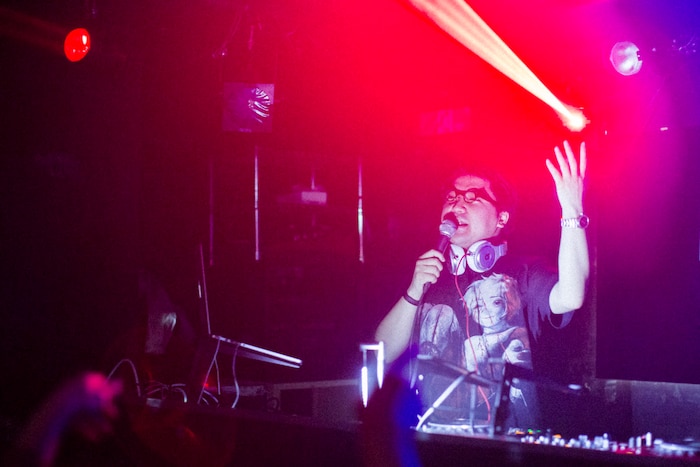
Technorch played live, his BPMs moving everywhere on the map while the audience yelled back at him, clearly recognizing mind-twisters such as “Gothic System 2011,” a dramatic Final Fantasy-on-Adderall adventure, and “Centrism,” which takes Rotterdam gabber to the arcade with help from Remo-Con (a hard dance DJ who Konami seems to be turning into some kind of high-res Tiësto). Masked man M-Project took the stage with a blistering set of makina, a Spanish hard dance variant, complete with the go-go dancing Yuki Suzuki, a raver girl from St. Louis, Missouri, and Xystran (AKA MC Dahl Headland), a Saitama speedcore DJ with a spiky mullet and outer space glasses. Chucky came on at the end, after working at his record store all day, and played high-octane hardcore. Roughly the same crowd was there from start to finish, nearly eight hours of seriously mad J-coredom.
“The biggest [hardcore] parties in Japan are still 400 to 500 people, but this does not mean that there are only 500 hardcore techno fans,” explains Technorch. “The top-selling J-core artist could be selling tens of thousand copies. There are a few hundred thousand music fans who listen to hardcore techno, plus a few ten thousand heavy buyers, plus 500 club goers. This might be confusing for people from Europe because we are the total opposite, but this is what makes J-core its own thing; because it’s so different, I think it is something new and innovative. I would like for everyone to know that there is this strange J-Core universe that sells the most techno CDs in the world, existing on the opposite side of the globe from Europe where the biggest parties in the world take place. I would like for everyone to be confused by it.”
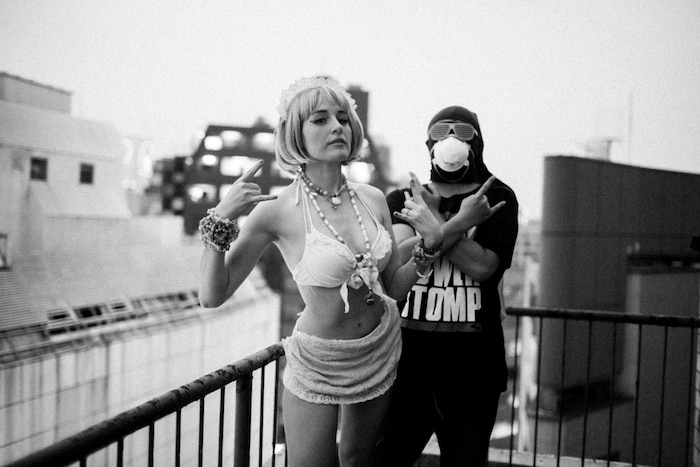
I walked inside a J-core wormhole for a while in Tokyo, literally and figuratively, caught deep inside a warren of forum posts and Facebook links and NSFW 4Chan threads where lolicore flourishes. But back in the States I Googled “JCore” and the first result was a set of six “accelerated body transformation” workout DVDs from Amazon. Otaku, I guess your secret’s safe for now.
Special thanks to Dev/Null, DJ Chucky, DJ Technorch and Jason Forrest.

